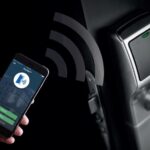Education has been an integral part of human development and growth. With the advent of technology and the internet, the concept of education has been revolutionized with the introduction of remote learning. Remote learning refers to the delivery of educational content and instruction through digital media, allowing students to learn from any location. Also Read: What is the role of tech in education and remote learning in 2023.
Benefits of Remote Learning
Remote learning offers numerous benefits, including increased flexibility and convenience, reduced costs, and the ability to access educational resources from anywhere in the world. It also provides students with more control over their learning pace and schedule, allowing them to better balance their education with other responsibilities.
Challenges of Remote Learning
While remote learning offers many advantages, it also presents some challenges, including a lack of interaction with teachers and peers, the need for self-discipline and motivation, and the challenge of maintaining technical equipment and internet access. These challenges can be overcome with proper planning and preparation.
Importance of Education in Modern Society
Education plays a critical role in modern society by providing individuals with the knowledge and skills necessary to succeed in a rapidly changing world. It prepares individuals for careers, helps them understand complex issues, and encourages them to be active and informed citizens.
Evolution of Education in the Digital Age
The digital age has brought about significant changes in the field of education, with technology playing a major role in the delivery of educational content. From online courses and virtual classrooms to educational apps and e-books, technology has made education more accessible and convenient for students.
Role of Technology in Remote Learning
Technology plays a vital role in remote learning, providing students with access to educational resources and allowing for virtual collaboration and communication with teachers and classmates. However, it is important to ensure that technology is used effectively and responsibly to enhance the educational experience and achieve desired outcomes.
Personalized Learning and Remote Education
Remote education also enables personalized learning, allowing students to tailor their education to their individual needs and interests. This can be accomplished through the use of educational technologies, such as adaptive learning systems, that can adjust to the needs and abilities of each student.
Collaboration and Communication in Remote Education
Remote education also requires effective collaboration and communication between students and teachers, as well as between students themselves. This can be achieved through the use of virtual communication tools, such as video conferencing, chat rooms, and discussion forums.
Quality Assurance in Remote Learning
Ensuring the quality of education in remote learning environments is critical to ensuring student success and satisfaction. This can be achieved through effective planning and preparation, ongoing evaluation of instructional materials and delivery methods, and collaboration between teachers, students, and administrators.
Accessibility and Equity in Remote Education
Access to education and technology is a major challenge for many students in remote learning environments. Ensuring accessibility and equity in remote education requires addressing these challenges through programs and initiatives aimed at providing students with the necessary technology and support.
Teacher Training and Professional Development
Teacher training and professional development is a critical component of remote learning, as it helps teachers to effectively integrate technology into their instructional practices and provide students with engaging and effective remote learning experiences.
Student Engagement and Motivation in Remote Learning
Maintaining student engagement and motivation in remote learning environments can be challenging, as students may struggle with distractions and the lack of social interaction. To overcome these challenges, teachers must find creative ways to keep students engaged and motivated, such as through interactive activities and virtual field trips.
Assessment and Evaluation in Remote Education
Assessing and evaluating student learning in remote education requires new approaches and methods, as traditional forms of assessment, such as exams and quizzes, may not be as effective in a remote learning environment. This requires the use of new assessment tools and techniques, such as online portfolios and virtual presentations.
Future of Education in a Post-Pandemic World
The COVID-19 pandemic has accelerated the adoption of remote learning, and it is likely that its impact on education will continue long after the pandemic has subsided. The future of education in a post-pandemic world will likely include a greater emphasis on remote learning and the integration of technology into instructional practices.
Conclusion:
In conclusion, education and remote learning are critical components of modern society, and they will continue to play an important role in shaping the future. By addressing the challenges and embracing the opportunities presented by remote learning, we can ensure that all students have access to a high-quality education that prepares them for success in a rapidly changing world.










